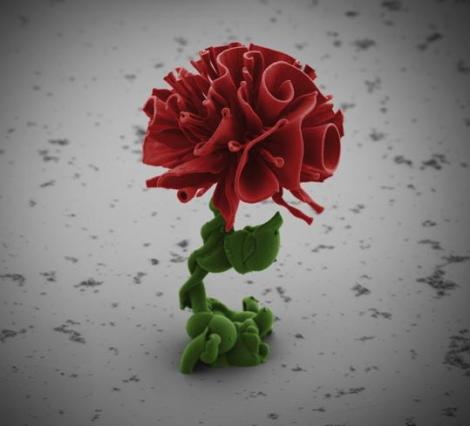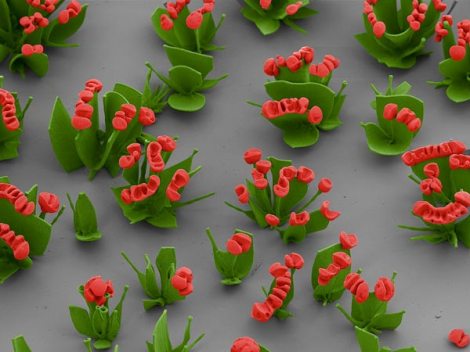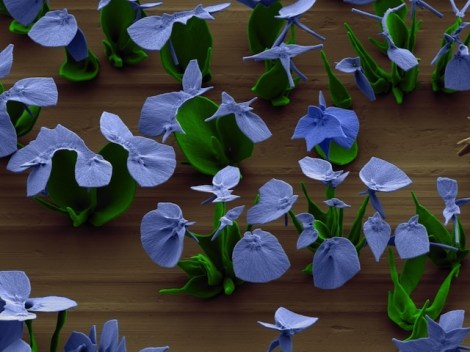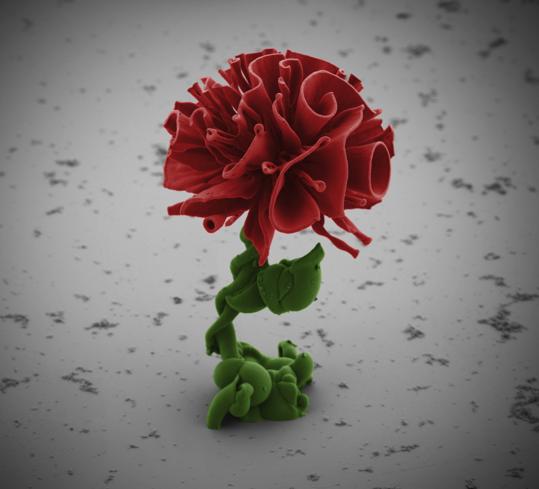
Wim Noorduin
A team of scientists at Harvard have discovered how to make crazy, beautiful, very tightly controlled shapes that are so tiny they’re invisible to the naked eye. Just by making simple changes in the environment in which salt and silicon crystals grow, they’ve made gardens of flower-like structures. Wim Noorduin, a postdoctoral researcher at Harvard University, grew a variety of these “flowers,” recently featured in the journal Science.

The process starts with a solution of salt and and silicon. By altering the acidity, alkalinity, and temperature of the solution, Noorduin discovered he could make his structures grow outward or inward. In other words, he could control the way the petals on his flowers are furled or unfurled. The thickness of the flowers’ petals is determined by how much carbon dioxide is introduced to the compounds. Combining various steps allowed him tighter control to manipulate the shape. He once created an entire field of these flowers on a penny, picturesquely planted along the base of the Lincoln Memorial. Noorduin, who is Dutch, also grew a tulip, because Dutch people are obsessed with tulips, even microscopic ones.

Wim Noorduin
To be clear, Harvard’s main goal here was not to make teeny tiny beautiful flowers. That was just something that sort of happened as the researchers went about the very serious business of making “industrial applications.” The reason the flowers are significant is they demonstrate how precisely scientists can control shapes, even at this scale. But I bet a lot of people will just settle for the flowers.



